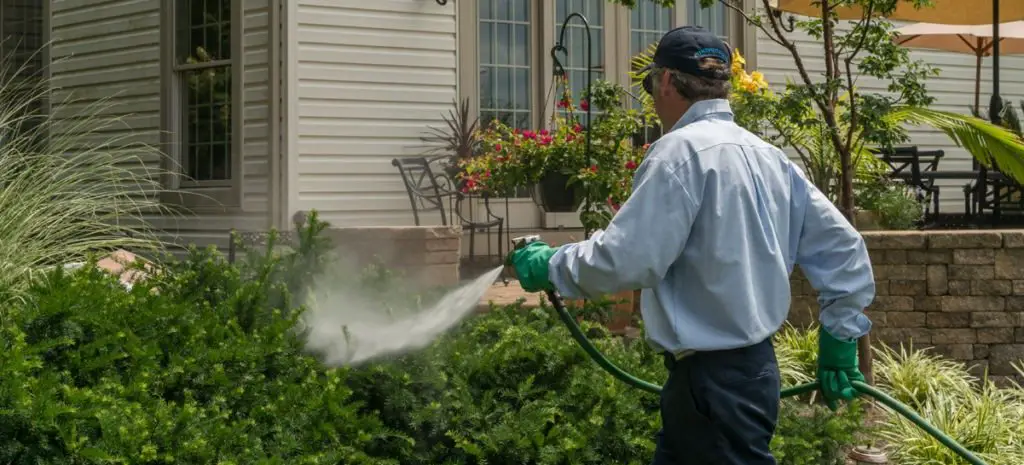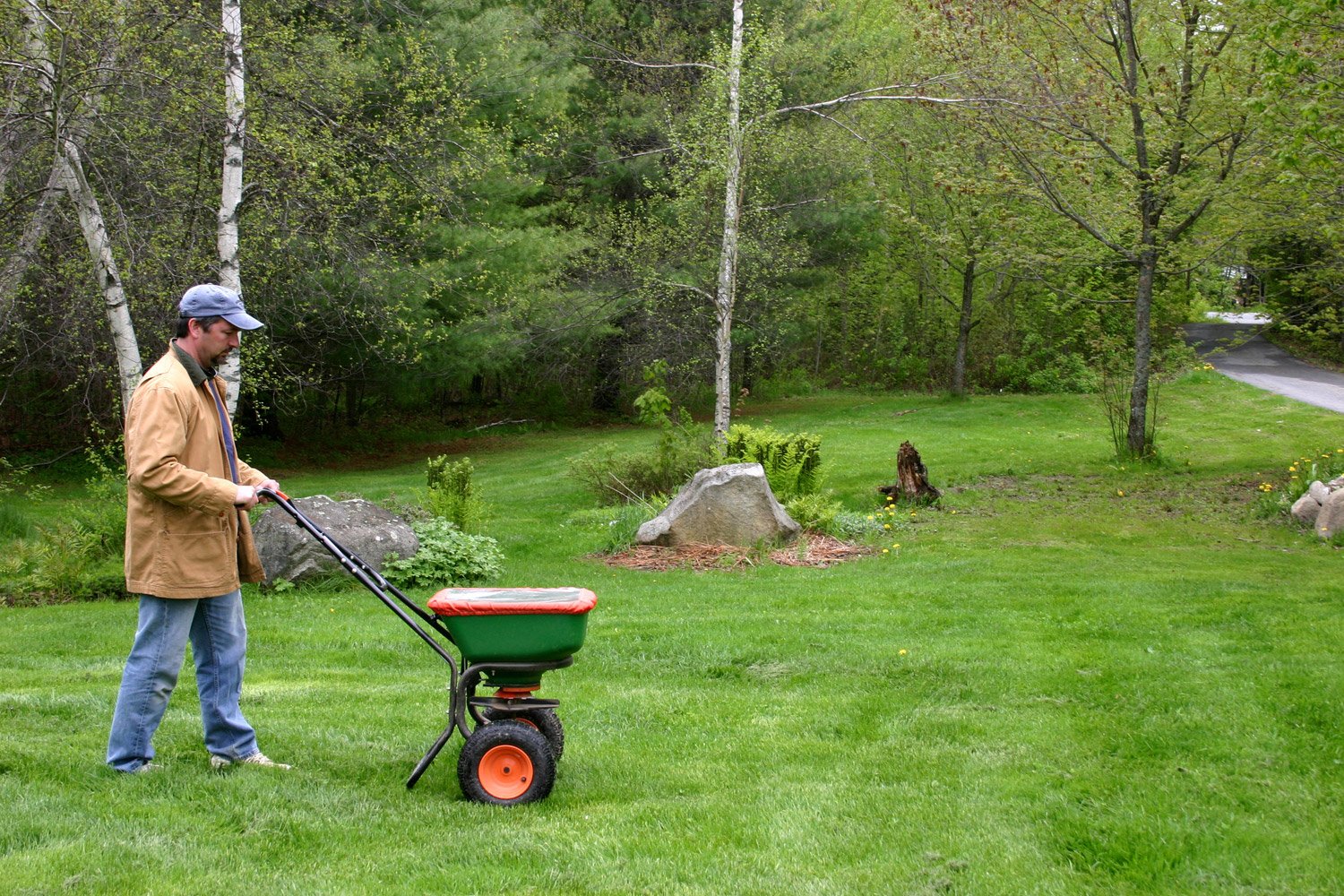Should I Water After Mowing
You can safely water your lawn after mowing whenever it needs moisture. However, you should prepare for this properly. Watering in the middle of a summer day can cause the water to evaporate from the landscape quickly. To avoid these problems, mow your dry lawn early in the morning and water immediately afterward.
Keeping Up With Fertilizing Schedules
You may love your lawn so much that you print out this blog post and hang it on your fridge. You could even set up reminders in your digital calendar to notify you when its time to fertilize for the season. But if you prefer an easier alternative, sign up for our Monthly Lawn Tips emails. Well send you an email each month with tips on fertilizing, mowing and dealing with pest or disease problems in your lawn.
Get Professional Lawn Fertilization Assistance
Even though fertilizing your lawn is an important part of regular lawn maintenance, it does take time and know-how to get the job done. Knowing how and when to fertilize yard plants and grass can be a challenge. If youre still wondering when is the best time to fertilize the lawn in spring, or asking can you over fertilize your lawn, it may be time to call in someone who knows the answers!
At The Grounds Guys, our team of lawn maintenance pros can test your soil, recommend the right fertilizer for your type of grass, and apply it for you when the time is right. Learn more about this and the other quality services we offer.
Categories:
Also Check: Quinkill Max Crabgrass And Weed Killer
Is It Bad To Mow Lawn Twice A Week
There is no set number of times per week that you should mow. Cool-season lawns, like Tall Fescue and Kentucky Bluegrass should be mowed about two times per week in the spring and fall, and about one time per week during the summer. Warm-season lawns containing Bermudagrass and Zoysia, are on an opposite schedule.
When To Fertilize Your Lawn In Ontario

When To Fertilize Your Lawn In Ontario?
The Lawn Care Sector Group of Landscape Ontario recommends using a phosphorus-free fertilizer on established turf. Nitrogen needs to be applied each year. Phosphorus and potassium are stable in soil. Late fall fertilization is best to increase fall and spring root growth and also results in an early spring green up.
Also Check: Lawn Love Requirements
Where And When Should Fertiliser Not Be Used
You should not use fertiliser meant for use in the spring in the autumn or winter months spring fertilisers encourage plant growth which is not needed in the winter months where the harsher temperatures and weather conditions can damage any new plants. Always make sure you are using the right sort of feed for the time of year. There is also no real need to apply fertiliser to frozen ground or very dry ground as it will not be absorbed properly. When applying fertiliser you should be careful to not allow fertiliser to enter water sources like rivers or lakes as this can be harmful.
When To Put Fertilizer On Lawns
All lawns need fertilizer in early spring when the grass begins to green up. Your fertilization schedule for the rest of the season depends on the type of grass in your lawn, the type of fertilizer you use, and your climate. Most lawn seed is a mixture of several different types of grasses, and both spring and fall fertilization are appropriate.
The label on a bag of lawn fertilizer will recommend a schedule based on the type of fertilizer it contains. The label is your best guide to how often to apply the product and how much to use. As long as you dont overdo it and avoid fertilizing in the hottest part of summer, your lawn should thrive.
You May Like: How To Stop Raccoons From Digging Up Lawn
How Often Should I Fertilize A New Lawn
Dont fertilize a new lawn until the grass is actively growing and you have mowed the lawn at least three times. Then use a fertilizer that will promote strong roots without a surge in grass growth while keeping the lawn weeds at bay.
For U.S. based gardeners, fertilize your lawn with Scotts Turf Builder Starter Food for New Grass Plus Weed Preventer .
U.K. gardeners should use a lawn fertilizer such as Miracle-Gro EverGreen Premium Plus Weed Control Lawn .
These fertilizers will slowly release nutrients into the lawn. You will only need to apply these once every 12 weeks while the lawn becomes established.
Its also worth mentioning that if you apply a crabgrass preemergent fertilizer or a regular weed and feed, ensure that you have waited four weeks before sowing your new grass seed.
How Often Is Too Often
The last thing your lawn needs is constant overfeeding. It does nothing to benefit your turf grass, and can be damaging to the environment. For most lawns, applying fertilizer once or twice a year is enough to keep your grass green and healthy. Precisely when you apply fertilizer depends partly on your climate, but mostly on the type of grass you have. The key is to fertilize during the season when your grass is doing the most growing.
You May Like: Rent Aerator Lowes
Best Time To Start Fertilizing Your Lawn In Spring
Did you know that the best time to put fertilizer down in spring depends on whether you have cool- or warm-season grass? Its true! Cool season grasses, or lawns that thrive in cooler temperatures, are best to fertilize in the fall when growing season is at its peak. Of course, if you missed fertilizing last fall or if your lawn just doesnt seem to be doing too well, you can also add a small amount of slow-release fertilizer in the spring. For warm season grasses that like the heat, its important to fertilize once active growth starts, in the spring. So, when is the best time to fertilize grass in the spring? Fertilizing in mid to late spring is ideal. This will ensure healthy growth and discourage weeds all season long.
Ready to get your spring landscaping off to a great start? When the best time to apply fertilizer in the spring arrives, here are a few tips youll need to handle fertilizer safely and some other things you can do to encourage healthy lawn growth.
Best Time Of Day To Fertilize
The best time to fertilize is also the best time to mow: between 8 to 10 AM or 4 to 6 PM, although this will depend on weather and water factors. Here are a few guidelines to follow:
High heat and fertilizer dont mix, especially with cool-season grasses. Asking cool-season grasses to absorb high amounts of nitrogen while surviving heat or drought will not end well for your lawn.
Wait until the grass dries from morning dew or rain before applying fertilizer. Droplets will weigh grass blades down, preventing fertilizers from evenly reaching the soil.
While you can fertilize before a light rain if youre expecting a big rainstorm, wait. Synthetic fertilizers will wash away before they even have a chance to absorb.
Dont wait too long in the evening to fertilize, as grass needs time to dry out a bit before the cool nighttime temperatures. Wet grass is more susceptible to fungal diseases.
Only fertilize when the grass is growing, not when its gone dormant.
Find out about the ideal time of day for fertilizing plants:
Recommended Reading: How To Put Lines In Grass
How Long To Water A Lawn After Fertilizing
Your lawns watering needs can change based on the weather conditions. But you probably want at least some idea of how long or how often, to water. While we recommend watering 1 to 2 times a week once the fertilization season starts in early spring , in the heat of the summer, that can be easily ramped up to 3 to 4 times per week. Its important that your lawn continues to receive ample water, even through the hottest days. Drought stress can really do a lot of damage to a lawn.In addition, your lawn care professional will also know exactly how much fertilizer to apply during periods of drought. This is important as forcing your grass to grow too much with fertilization during periods of drought can actually end up harming your lawn.
Use The Right Spreader

When applying lawn fertilizers, always use a lawn spreader. Never spread product by hand! A broadcast spreader with a side-shield feature like the EdgeGuard® feature is great for most lawns. This makes application along the lawn’s perimeter easy by shutting off half the spreader flow, so product is only applied on the lawn and not on non-lawn areas like the driveway, sidewalk, or landscaping. A drop spreader is another option for small spaces because the application area is much narrower. Learn more about which spreader is right your yard .
Fill the spreader hopper with your lawn fertilizer, then set the spreader to the recommended setting listed on the product package. If the product package does not provide a spreader setting, it is not intended for lawn use.
Read Also: Weed Killer For Quackgrass
When Should I Start Seeding My Lawn
As a general rule, plant cool-season grass seed at least 45 days before the estimated date of your first fall frost, before soil and air temperatures drop to less favorable levels. Your grasses will enjoy a full fall season, plus a second cool growing season come spring.
Simply put, grass clippings are good for lawns because they turn into natural fertilizer. When you leave your clippings on your lawn, you give them the chance to decompose, releasing water and nutrients back into your lawns soil. This helps grass grow greener, healthier, and thicker.
Is It Better To Fertilize Before Or After Rain
When is the best time to fertilize a lawn before or after a rain? Too much rain could wash away the fertilizer before it has a chance to soak into the soil, so plan to fertilize several days before a heavy rain arrives or several days later. The result will be a beautiful green, healthy lawn for you and your family.
Don’t Miss: How Much Does It Cost For Lawn Mowing
What Month Should I Fertilize My Lawn
Most lawn care companies recommend that you apply lawn fertilizer in the spring, between February and April. This is when your grass will start to green up as it begins to actively grow. Basically, if it looks like your grass is ready for its first mowing of the season, then it should also be ready for lawn fertilizer.
While most people know to fertilize their lawns in the spring, it is important to remember that fall feeding is critical, too. In the fall, grass roots are going down into the soil and need fertilizer to stay healthy. This is the most important application of fertilizer for the whole year since it will protect your lawn as it goes dormant over winter. However, if the fall you should use a specific fall fertilizer that is slightly higher in phosphorous and potassium, as it will promote better root growth. To ensure optimal lawn health, fertilize heavily in the fall and lightly in early spring.
The Best Times To Apply Fertilizer
Whether youre a seasoned turfgrass fanatic or a first-time lawn owner, fertilizer schedules arent always the easiest to track throughout the year. Have no fear! Were here to help you keep up with when to fertilize your lawn, what type of fertilizer to use, and even how to organically care for your lawn if conventional fertilizers arent your thing.
Don’t Miss: Cub Cadet Small Riding Mower
Can I Fertilize My Lawn Every Two Weeks
Overfeeding is very bad for your lawn. Fertilizing your lawn every two weeks is like overfeeding. You will not get any benefit from it otherwise it can be damaging the environment. For best results, apply fertilizer once or twice a year, its enough to keep your grass green and healthy. The key is to fertilize during the period when the grasses are growing most.
How Often Do You Have To Wait Between Fertilizer Applications
Fertilizers with a higher nutrient content will mean that you need to wait longer between applications in comparison to lawn fertilizer with a lower nutrient content. Some fertilizers can be applied once every four weeks whereas some you will need to wait as long as twelve weeks before you feed your lawn.
Knowing how long you will need to wait between applications will differ between the specific lawn fertilizer you have purchased.
A good tip to ensure that you dont over-fertilize your lawn is to make a note on a calendar the date you applied the lawn food. Read the instructions on your chosen fertilizer to see when the manufacturer recommends reapplying the feed. Then workout when the feed should be reapplied and add this date to your calendar.
Alternatively, set a reminder on your smartphone to prevent over-feeding.
The recommended frequencies of fertilizer application can be found in the tables further down in this article.
Also Check: How To Get Rid Of Violets In Lawn
Late Summer To Late Fall
Between August and November, grass slows down and prepares for the winter months. At the same time, broadleaf weeds start active growth again. With Pennington UltraGreen Winterizer Plus Weed & Feed Fertilizer 22-0-14, you can feed your northern or southern lawn nutrients essential to its winter prep and spring green-up and kill broadleaf weeds. As a general rule, allow six to eight weeks between fertilizing and your first expected frost.
As with all fertilizer products, check the label and follow instructions for your specific grass type. If you’re overseeding, wait until next year for weed & feed. Instead, turn to Pennington UltraGreen Lawn Fertilizer 30-0-4 for the year’s final feeding.
Always sweep excess fertilizer off sidewalks and patios to avoid runoff.
Organic Vs Synthetic Fertilizer

While you may be tempted to pick up a bag of synthetic fertilizer at your local hardware store, they come with a ton of disadvantages to your lawn, your health, and the environment.
Synthetic fertilizers dont remain in the soil very long , require extra care to avoid nitrogen burn, encourage erosion and soil compaction.
They also rob the soil of organic matter and beneficial microorganisms and have negative health impacts on you, your family and pets, and any aquatic life in your nearby groundwater.
Organic fertilizer will last year-long, wont cause nitrogen to burn, aerate the soil, prevent erosion, add organic matter and support beneficial microorganisms, and are better for human and environmental health.
Suppose you want a low-maintenance lawn, transition to an organic lawn using organic fertilizers. The transition will require a few years of nurturing, but youll love it in the end.
I recommend reading Paul Tukeys essential guide, The Organic Lawn Care Manual, for a complete schedule for transitioning painlessly to organic.
Recommended Reading: How To Fix Dead Patches Of Grass
When To Fertilize Lawn
Knowing when to fertilize your lawn depends on how often you plan to apply it. If you fertilize once a year, do it around Labor Day thats when lawns absorb the most nutrients. For biannual fertilizing, add a second application the middle of October.
There are exceptions to this timeline depending on climate and soil types, so adjust if your lawn is not retaining enough nutrients. In the spring, if you feel the need, spread a little fertilizer to help the greening process.
Be Wary Of Fertilizer Application Rates
Across the board, most fertilizer manufacturers are overzealous about their recommended dose and feeding schedule. Start light with half the recommended amount and rate of fertilizer. You can reapply if you dont like the results. Over a season or two, youll get a clear sense of how much it takes to get a healthy lawn.
A healthy lawn will be a relatively light shade of bright green. A lawn that is a deep, almost blackish green, has been very heavily fertilized. The dark green color comes from a lot of nitrogen-based fertilizer used on the lawn. It is highly likely that some of that fertilizer has run off into the streets, storm sewers, and has made its way into local streams and rivers.
Dont Miss: What Is The Best Lawn Sweeper
Recommended Reading: Too Much Peat Moss On Grass Seed
How To Fertilise A Lawn
You can fertilise a lawn by hand, but it can be a difficult process as it is hard to tell whether you have put the right amount down. It is generally advisable to use a spreader as most lawn care professionals do because they can help you to spread your fertiliser evenly over the surface and give better results. There are several different types of spreader that you can use. Shoulder or handheld spreaders are good for gardens that are not a standard rectangle shape and are very easy to use. You can also use mechanical push-along spreaders. These spreaders are better for large gardens where you have a lot of fertiliser to spread. Rotary spreaders have a spinning mechanism that throws or sprays the fertiliser while drop fertilisers have small holes in the underside out of which the feed drops onto the grass. Liquid fertiliser can be sprayed directly onto the lawn surface and is good for demand feeding in areas that need more nutrients.
Ideally you should feed your lawn as soon after mowing as possible as this will give the grass more time to absorb the nutrients before the next mow. If you mow your lawn after fertilising you may remove the fertiliser before it has a chance to sink in properly.
